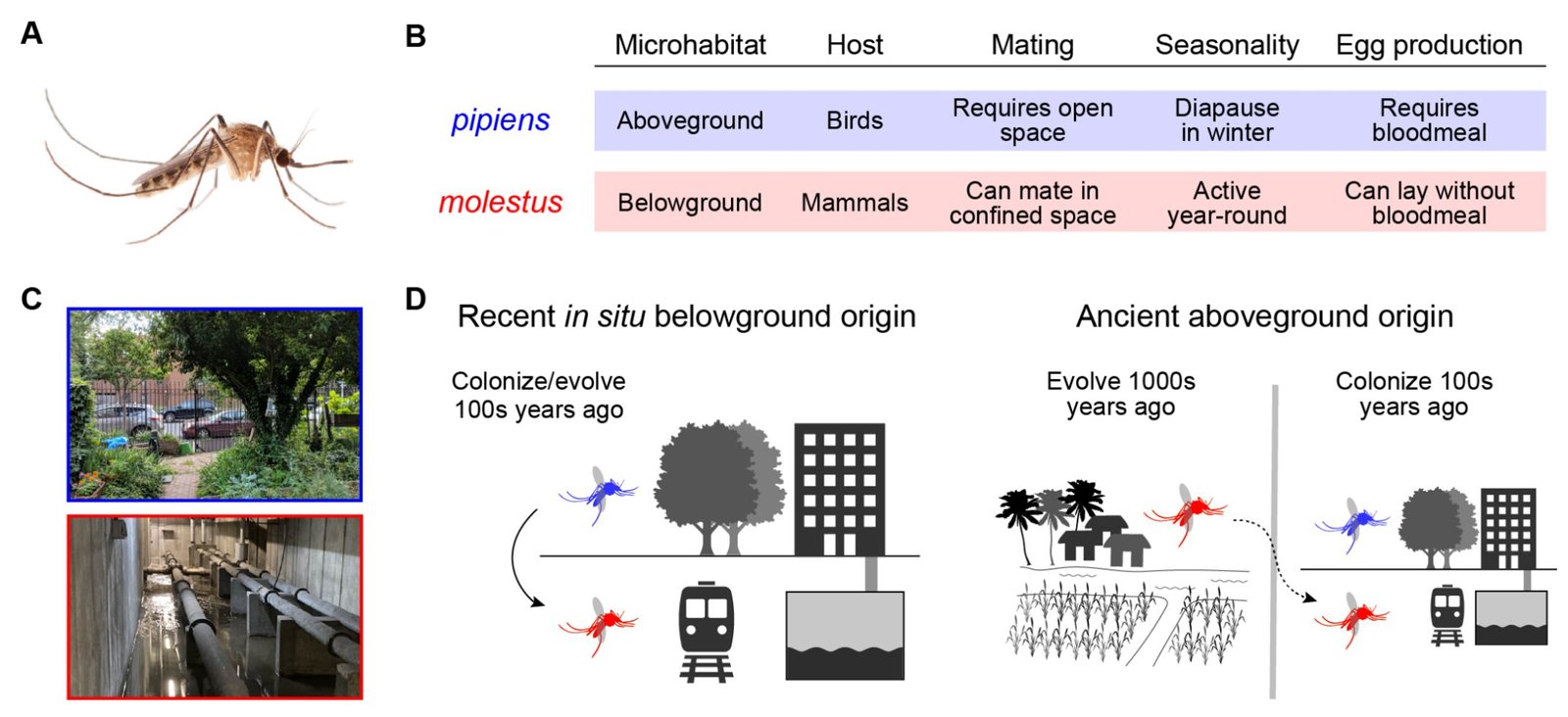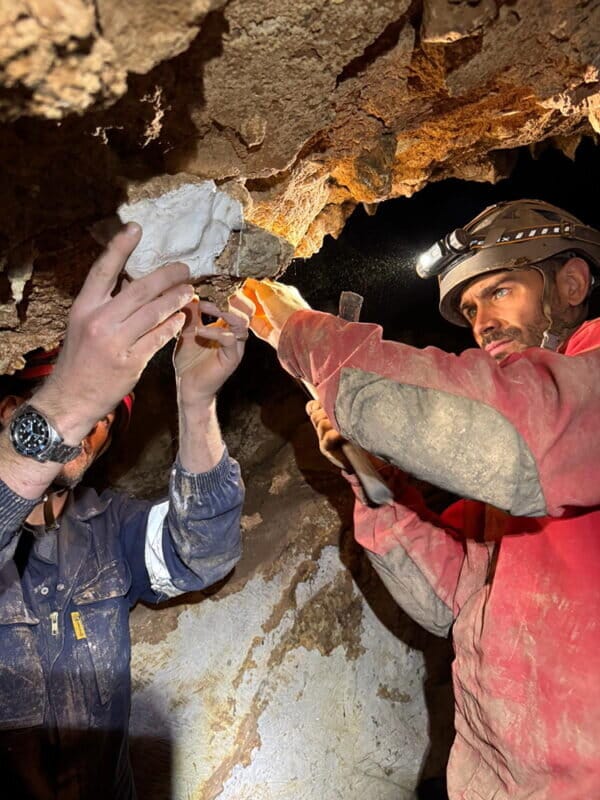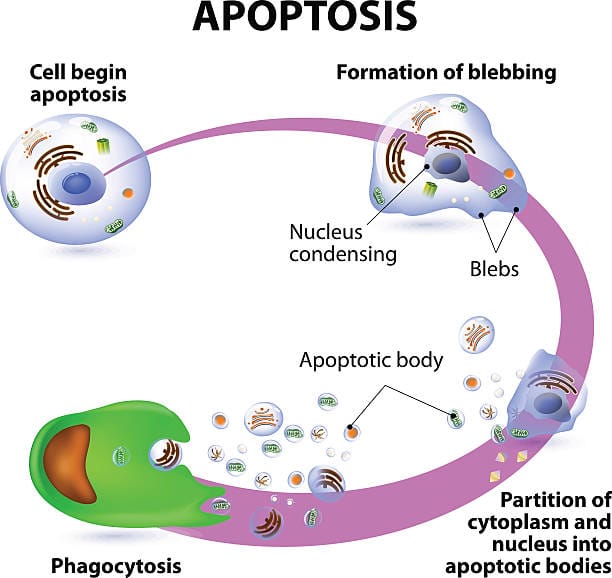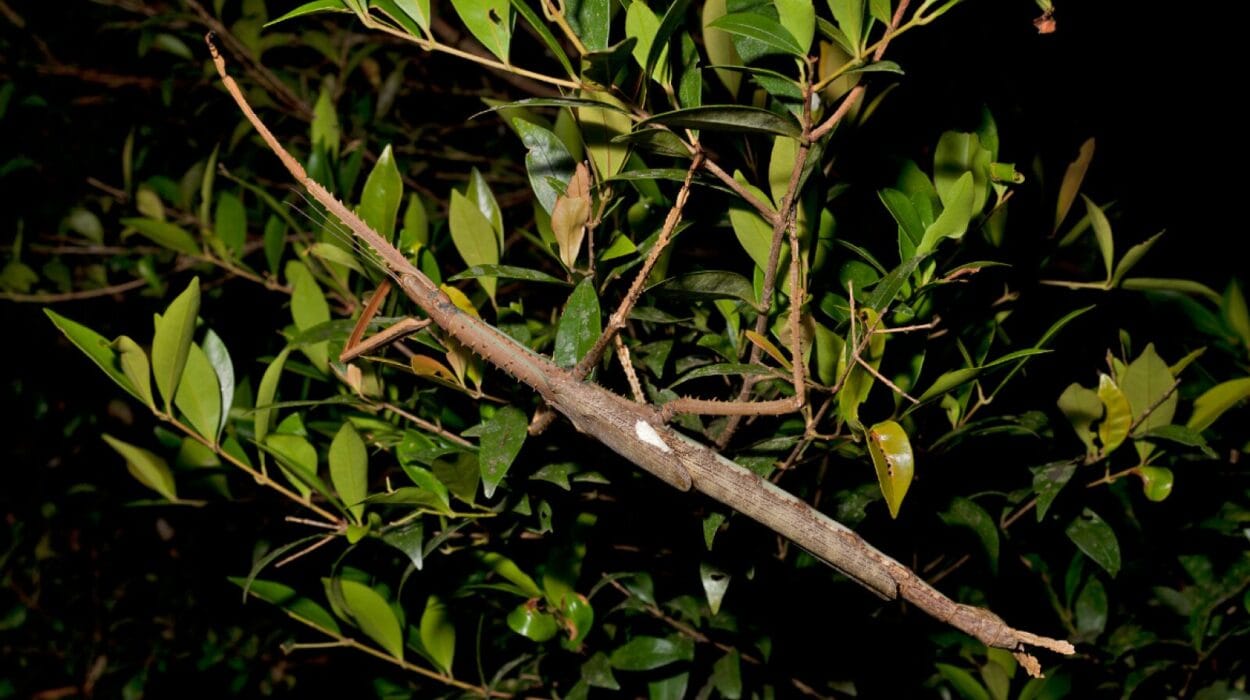In an intriguing new study, an international team of researchers has uncovered that the mosquitoes commonly found in London’s underground subway system have a fascinating evolutionary history. These mosquitoes, known scientifically as Culex pipiens f. molestus, have evolved from a species originally found in the Middle East, specifically likely in Egypt, over thousands of years. The team’s groundbreaking research, posted on the bioRxiv preprint server, sheds light on the genetic evolution of this unique mosquito species and its surprising historical journey across continents.
A Brief History of the Mosquito in London’s Subway
The story of the London Underground mosquito goes back to World War II, when the city’s metro tunnels provided a refuge for people trying to escape the bombardment by German forces. The underground became a place of shelter and survival for many, but it was not without its discomforts. Among these, mosquitoes became an infamous nuisance, further compounding the hardships of life in the cramped tunnels. Over time, the mosquito species that inhabited the underground became synonymous with the city’s metro system and earned the informal title of London Underground mosquito.
For years, it was believed that this mosquito species had evolved specifically to live in the subterranean environment. As urban legends grew, it was commonly assumed that the underground tunnels of London provided a perfect habitat for the mosquitoes. However, as more research was conducted, it became clear that the species found in the tunnels was not unique to London, but could be found in many other parts of the world, living in a variety of environments. This led to the eventual debunking of the theory that the mosquitoes were a direct product of the underground environment.
Despite this, the mystery surrounding the species persisted. Known formally as Culex pipiens f. molestus, this mosquito species had garnered enough curiosity among scientists to warrant further investigation into its evolutionary origins.
Unraveling the Mosquito’s Evolutionary History
The research team embarked on a mission to trace the evolutionary roots of the Culex pipiens f. molestus species. Using modern genetic techniques, the team gathered hundreds of mosquito samples from cities across the world, focusing on populations that were genetically related to the London Underground mosquito. These samples came from various environments, ranging from urban areas to more rural or natural habitats. By sequencing the DNA of these specimens, the researchers were able to piece together the evolutionary history of this mosquito species over thousands of years.
What they discovered was both surprising and insightful. Their analysis strongly suggested that the molestus mosquito species didn’t originate in the underground tunnels of London, nor did it evolve there over the past century. Instead, it appears that this mosquito species first emerged in the Middle East, most likely in Egypt. The findings provided significant evidence to support the idea that this mosquito’s ancestors had evolved in the Mediterranean region and had likely spread into Europe over a much longer period than previously thought.
Key Evidence and Arguments Supporting the Middle Eastern Origins
The research team outlined three primary lines of evidence that support the idea that the Culex pipiens f. molestus species originated in the Middle East, particularly in the region around Egypt:
- Genetic Similarity to Mediterranean Mosquitoes: The team discovered that the genetic makeup of the molestus mosquito was closer to other populations found in the Mediterranean basin than to other populations in Europe. This observation suggests that the evolutionary origins of the species are likely tied to the Mediterranean region, where conditions may have been favorable for the species to thrive and evolve.
- Genetic Variability in Mediterranean Populations: Further analysis revealed that the Mediterranean populations of the molestus species exhibited more genetic diversity than those found in subterranean environments, such as the underground tunnels in London. This implies that the mosquitoes living in the tunnels have undergone some degree of genetic isolation over time, leading to less genetic diversity compared to their Mediterranean counterparts. This isolation likely began once the mosquitoes settled into subterranean environments, where they had less contact with other populations.
- Absence of Pipiens in the Middle East: Another crucial piece of evidence is the absence of Culex pipiens populations in the Middle East today. Culex pipiens is the species that is closely related to molestus but has adapted to living in more diverse environments, including open spaces and urban areas. The absence of pipiens in the Middle East suggests that the molestus species may have colonized Europe without much genetic intermingling with pipiens populations. This, the researchers argue, further supports the idea that molestus has long been established in parts of Europe, potentially dating back to the dawn of agriculture.
The Evolutionary Journey to Europe
The team’s findings have significant implications for our understanding of how the Culex pipiens f. molestus species spread across Europe. The researchers suggest that molestus mosquitoes may have arrived in Europe much earlier than previously believed, potentially as early as the Neolithic period, when human populations in the Middle East began to develop agriculture and trade routes. It’s possible that as human populations migrated and established new settlements, the mosquitoes followed, adapting to new environments over time, including the underground areas of cities like London.
The researchers also suggest that the mosquitoes may have initially thrived in the Mediterranean and North Africa, and over time, spread further north into Europe, where they adapted to urban environments and, eventually, subterranean habitats. This migration likely took place in multiple waves, with mosquitoes evolving along the way to suit various environments, from open fields to more confined, artificial spaces like tunnels and subway systems.
Implications for Our Understanding of Evolution
This study sheds new light on the concept of evolutionary adaptation. It shows how species can evolve over time, not just due to their immediate environment, but also as a result of larger-scale migration patterns and historical events, such as the spread of agriculture. The researchers’ findings also highlight the importance of genetic studies in uncovering the hidden evolutionary stories of species that might seem unremarkable at first glance, such as the common mosquito.
The research challenges previously held assumptions about how certain species evolve in response to their surroundings. It also opens up new avenues for understanding how species can remain genetically isolated and evolve into different forms when separated from their ancestral populations. In the case of the London Underground mosquito, this isolation likely took place over thousands of years, as populations of mosquitoes living in underground environments diverged from their Mediterranean relatives.
Conclusion: The Longevity of Mosquitoes in Europe
In conclusion, the research team’s study provides compelling evidence that the Culex pipiens f. molestus mosquito has been in Europe for much longer than previously thought. The species likely originated in the Middle East, specifically in Egypt, and over time, spread across Europe, adapting to new environments. This suggests that the molestus mosquito has been part of Europe’s ecosystems for thousands of years, potentially since the beginning of human agriculture.
This study not only deepens our understanding of the evolutionary history of a species but also provides valuable insights into how human history and environmental changes have shaped the world around us, including the most seemingly mundane creatures like mosquitoes. The findings underscore the intricate connections between genetics, migration, and adaptation, illustrating how small, often unnoticed species can carry profound stories of our planet’s past.
Reference: Yuki Haba et al, Ancient origin of an urban underground mosquito, bioRxiv (2025). DOI: 10.1101/2025.01.26.634793






